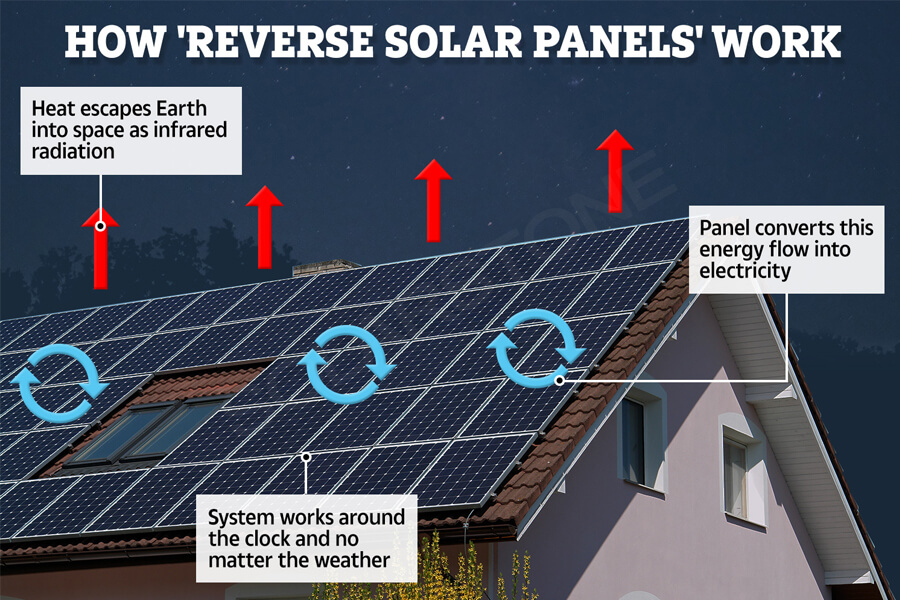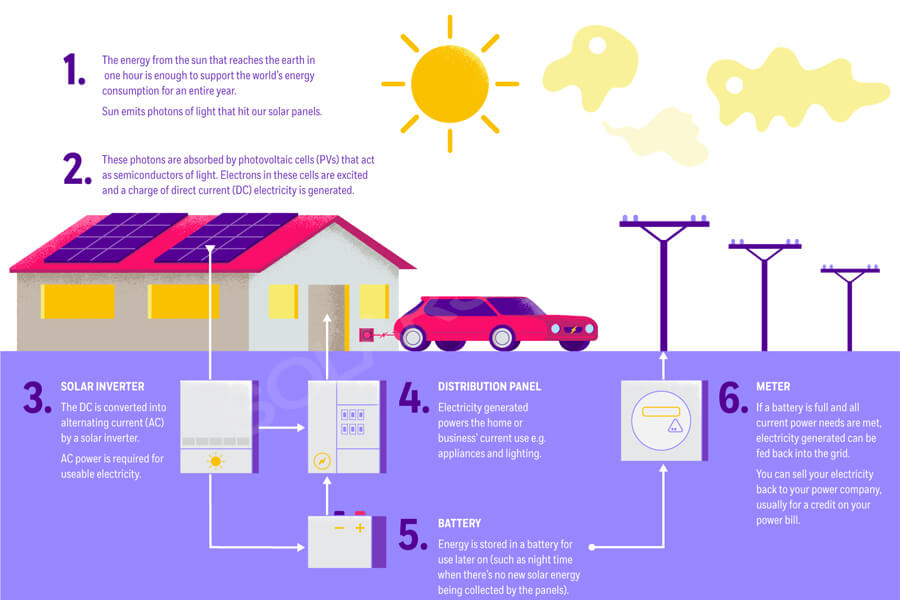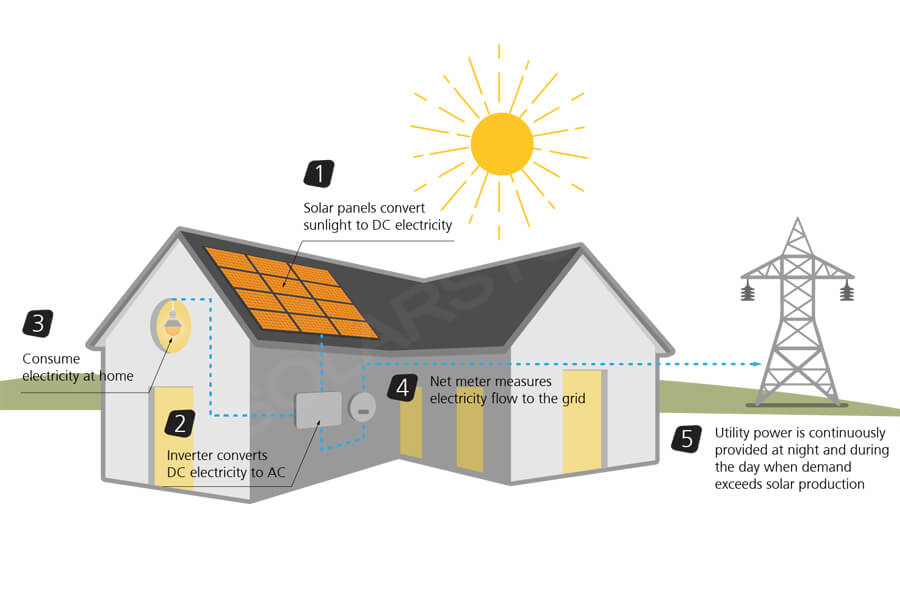Have you seen the solar panels on the roof and want to know what they do and how they do it? Well, those high-tech sparkling glasses are actually just part of a complex network that uses the sun’s renewable energy to power homes. Let’s simply and gradually understand the working principle of solar energy.
How do solar panels generate electricity?
Step 1: activate the solar panel.
Each individual panel consists of a layer of silicon cells, a metal frame, a glass shell surrounded by a special film and wiring. For maximum effect, panels are combined into an “array” (ordered series) and placed on the roof or in a large outdoor space. Solar cells, also known as photovoltaic cells, absorb sunlight during the day.
Step 2: the solar panel generates current
Each solar cell has a thin semiconductor wafer made of two layers of silicon. One layer is positively charged and the other is negatively charged, forming an electric field.
When light energy from the sun strikes a photovoltaic solar cell, it will power the cell and cause electrons to “separate” from atoms in the semiconductor wafer. These loose electrons move through an electric field around the wafer, which generates an electric current.
Step 3: convert electric energy.
Now, solar panels can effectively convert sunlight into electric energy, but the generated electric energy is called DC (or DC) electricity. This is not the type of power that supplies power to most families. It is AC (or AC) electricity. Fortunately, DC can be easily converted to AC through a gadget called an inverter.
In modern solar systems, these inverters can be configured as one inverter of the whole system or as a single micro-inverter connected behind the panel.
Step 4: the converted power supplies your home.
After the solar energy is converted from DC to AC, it will pass through your distribution board and be distributed at home to power your appliances. It works exactly the same way your power company generates electricity through the grid, so nothing needs to be changed at home.
Since you are still in contact with traditional power companies, you can automatically obtain additional power to supplement any solar shortage in the grid.
Step 5: measure the use of the net meter.
On cloudy days and at night, your solar tile or solar panel may not capture enough sunlight for energy; On the contrary, at noon when no one is at home, they may collect excess energy – more than you need to operate at home.
That’s why you use a meter to measure two-way power in and out of your home. Your utility company usually provides points for any remaining power you send back to the network. This is called net measurement.





